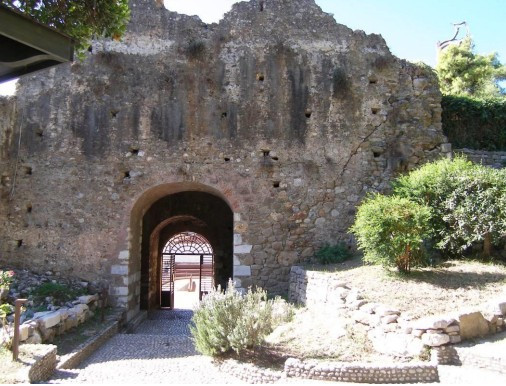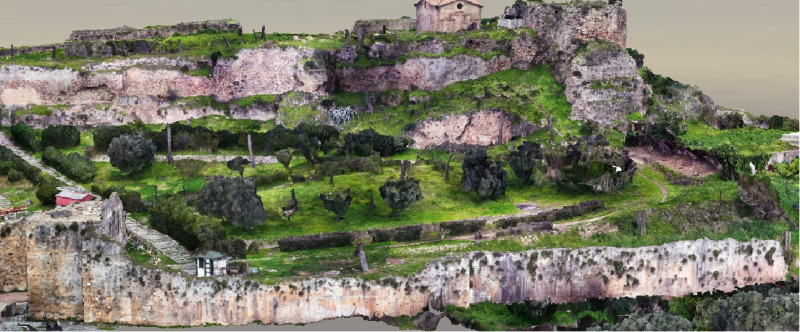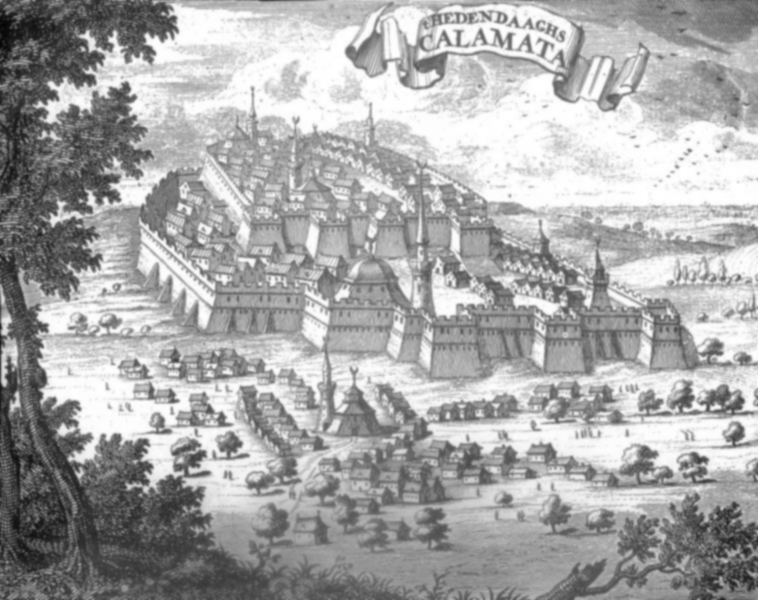“With the completion of these works, the monument becomes accessible to everyone, it is upgraded aesthetically and functionally”, said the minister. Culture Lina Mendoni
The Ministry of Culture launches work to fix and restore parts of its fortification Kalamata Castleon the basis of an approved architectural and static study, as part of the design for the overall enhancement of the monument, in terms of its aesthetics, safety and functionality.
One of the main problems found today is the aesthetic degradation of the Castle, from the almost universal loss of the morphological elements of the fortification, the growth of intense vegetation and biological deterioration. A change in its character is observed, from its tree planting and the configurations carried out at the beginning of the 20th century, such as the closed area of the refreshment room and the terrace, in the 50s. The existence of fissures and local disorganization of the stonework, in parts of the walls, which were not included in the sections and the rocky slopes that received fixing and restoration operations in the past, is found.
The Minister of Culture, Lina Mendonisaid: “With the completion of the project of remodeling and refurbishing the entrance gate of the Castle and the installation of a lift for the disabled and the disabled, accessibility problems in the infrastructure of the Castle were essentially solved. In our overall planning for the Castle of Kalamata, in addition to the projects to improve accessibility and highlight the monument, we have included projects to fix and restore parts of the fortifications, which show extensive pathology. The current state of conservation of the monument is considered problematic, due to the many phases of destruction by the various conquerors, but also the effect of time and natural phenomena, such as the effects of the seismic activity in the area that have damaged its structural integrity. The restoration proposals of the monument, which are included in the architectural and static study, aim to remove the basic elements of its pathology, as well as the causes that cause them. In our autopsy, with the participation of the competent officials, the situation was established, and the preparation of the necessary studies was launched, in order to carry out fixing and restoration work on part of the fortification. With the completion of these works, the monument, accessible to all, is upgraded aesthetically and functionally, and offers an overall improved cultural experience to its visitors”.
The Castle has the form of a typical medieval fortress, with two defensive enclosures, a smaller inner one at the top of the hill, at the eastern end of which rises a large strong Tower (donjon) with a vaulted water tank (cistern). The walling of the inner (upper) precinct begins from the Acropyrgos. A second, wider outer (lower) enclosure protects a larger area. The walls are vertical and follow the natural contours of the ground.
The proposals of the study aim to restore and highlight the monument, with the aim of saving it, protecting it and ensuring its safe visitation. Also, they aim to aesthetically upgrade the monument using elements from historical and on-site research, as well as from corresponding monuments of the same era and course over the centuries. The main axes of the architectural proposal are the restoration of the structural coherence and capacity of the wall, the restoration of the enclosure and the parapet in the parts where they are preserved, the indicative reconstruction of parts that are still present, but also of the ramparts on the southern rampart, the reconstruction of the ledges and parts of the Upper Gate that have collapsed.
The study area includes:
1. The south-eastern part of the outer (lower) enclosure,
2. The Lower Gate of the outer enclosure, from where the inside of the Castle is accessed,
3. The part of the outer enclosure from the Lower Gate to the northern rampart,
4. The northern Promahona,
5. The southwestern Bastion of the inner (upper) precinct and the section up to the Upper Gate,
6. The part of the inner (upper) precinct from the Upper Gate, entrance to the inner precinct that ends in the Acropyrgos
7. The Acropyrgos (donjon) at the northeastern end of the inner (upper) precinct, which stands on top of the hill, being the most imposing structure of the monument. In the highest western part of the walls of the inner precinct, where the ancient acropolis is, there is a naydrium dedicated to Panagia Kalomata, probably built on the ruins of the temple of Athena Nedousia. After the occupation of the Castle by the Venetians, the small temple was integrated into the central fortress Pyrgos.
The Castle is located on a hill, northwest of the modern city of Kalamata. At the foot of the hill passes the river Nedas. According to archaeological research, the Acropolis of the Ancient Lighthouses (1500 BC) is located on the site of the current Castle of Kalamata. During the 6th-7th century, the Byzantine fortress that was founded was transformed into a castle town, strengthening its walls to protect the population. Until the 10th century little evidence survives of its historical development. In 1205, the Castle passed into the hands of the Franks, founders of the principality of Achaia, who rebuilt it and added new fortifications. Godefroid I Villeardouinos settled in the Castle, which was the seat of the Barony of Kalamon, until 1325, when it was occupied by the Byzantines. In the 15th century it passed into the hands of the Ottomans and in 1685 it returned to the Venetians, who began to maintain the existing fortifications and build new ones. In 1715, the Castle was recaptured by the Ottomans, while the Venetians had already lost most of their possessions in the Peloponnese. During the 18th century, the Castle lost its strategic importance and at the beginning of the 19th it began to be abandoned. After the liberation of the city from the Turks, on March 23, 1821, in 1825, the Castle suffered great damage from Ibrahim’s army. During the Second World War, the Italian forces camped in the Castle area. In the earthquake of 1986, it received a significant blow and became inaccessible. The monument was again visited in 2009, after fixing and restoration work. At the beginning of the 20th century, the area of the Castle was formed into a thicket, with pavilions, paths, sitting areas and stopping areas. In the western part of the upper precinct, a refreshment center was erected in 1950, which operated until the 1980s, while an amphitheater for cultural events has been built in the lower precinct.
Source :Skai
I am Frederick Tuttle, who works in 247 News Agency as an author and mostly cover entertainment news. I have worked in this industry for 10 years and have gained a lot of experience. I am a very hard worker and always strive to get the best out of my work. I am also very passionate about my work and always try to keep up with the latest news and trends.













